No products in the cart.
Tarzan Loves Idaho
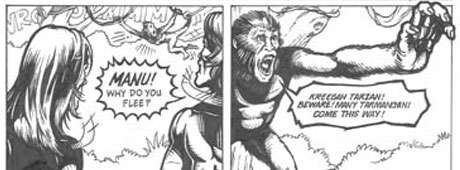
An Anthology Taps a Trove of Gem State Comic Book Talent
By Albert Frank Asker
Editor’s Note: In response to interest from fans and practitioners of serial art, Al Asker’s story about how he assembled an anthology of work by Idaho comics creators is offered free of charge. Enjoy.
Years ago I wrote an article for myself, because it was one of those things that you just have to get out of your system. It felt important, like it had to be communicated to others, but I didn’t have anywhere to publish it. The article I wrote for myself was about the history of comic books in Idaho. In it, I wrote about the cowboy comic book called Idaho that was published by Dell Comics of New York City in the 1960s. I wrote about onetime Boisean Dave Stevens and his famous comic book character The Rocketeer. I wrote about native Idahoan Dennis Eichhorn and his Eisner Award-nominated autobiographical comic book series Real Stuff. I wrote about Boisean Andy Garcia’s Oblivion City comic book series. I wrote about Boise’s first comic book publisher, Bishop Press. At the end, I expressed a deep hope that all these people could get together and produce an anthology featuring the comic book creators of Idaho. It was a dream of mine to publish that article and organize that anthology. But no one ever read it.
Why was I so interested? I just loved comic books. One of my earliest memories is of sitting around the dining room table in Boise with my parents, cutting out a bunch of order forms from a stack of my old Captain America comic books. My parents ordered a subscription for me to Captain America, posters, and toys related to the star-spangled Avenger. My younger brothers and sister dabbled in comic books for a time, but I was hooked for life.
I’ll never forget the first time my parents took me to a comic book store at its old location on Fairview Avenue in Boise. The same store is still on Fairview, but it used to be farther down the street, next to where a pizza joint is located that eventually absorbed the comic book shop’s old storefront. I had never seen so many comic books in my life. The rich bouquet of newsprint filled the shop with the smell of yesteryear—the Golden Age when comics were king.
There were so many old comics. There was Superman #123, in which Supergirl made her first appearance. There was Detective Comics #38, which had the first appearance of Robin. There was The Incredible Hulk #181, the first appearance of Wolverine. A framed original drawing of The Rocketeer by Dave Stevens hung on a wall. I had no idea such a place existed. This was my new mecca, Disneyland, and heaven all rolled into one.
Through the years, I patronized many of the comic book shops in Boise and the surrounding areas and they were all magical to me: King’s Komix Kastle (Idaho’s first comic book shop, which opened in April, 1973), The Paperback Place/Comic Book Company, New Mythology, Outpost 12, Archenemy Comics, 1,000,000 Comix, Toys in the Attic, The Book & Comic Exchange, Captain Comics. Over time, little fan conventions like Fandemonium sprang up, but there was nothing specific to comic books.
And then from August 20 to November 27, 2011, the Boise Art Museum hosted “Comics at the Crossroads: Art of the Graphic Novel,” an exhibition that featured forty comic book artists from the Northwest. Josh Shapel, a materials specialist at the Boise Public Library, was moved by that show. After seeing local comic book creators Adam Rosenlund, Ethan Ede, and Chris Hunt speak at an event during the exhibition, Josh began to wonder if he could organize a comic con at his library. He had heard of libraries in other states doing something similar. On November 5 of that same year, Travis Porter organized a mini-comic-con at the Hillcrest Library. The die had been cast for Shapel.
In 2013, the inaugural Library Comic Con took place at the main library branch in downtown Boise. It was a huge success, drawing thousands of fans, and proving there was a place for comic books in the City of Trees. Dennis Eichhorn and I, with help from Randall Kirby and Scott Pentzer, gave a presentation at that first Library Comic Con based on my old article that no one had ever read: “The History of Comic Books in Idaho.” I told the crowd it was a dream of mine to start an online fundraising campaign to publish a comic book anthology showcasing writers and artists from our state. Immediately, someone in the audience said she would be willing to donate money to a cause like that.
Afterward, I approached a couple of other creators at the show. Dennis Eichhorn was the first to agree to help out, followed by Allen Gladfelter. Over time, I got in contact with all my favorite writers and artists from Idaho to see who else would help with my mad, impossible scheme.
In November 2013, I discovered that I was not the only one in Boise who wanted to make comic books. Right before Dennis and I gave another talk about the history of comic books in Idaho at a conference at Boise State University, Mystery House Comics burst onto the scene with their first offering, Shivertown #1. It was a tale of an aging private dick who needed his artistic daughter to help him run the family business. The comic book, released on October 13, was written by Jon Keithley and illustrated by Shanae LaVelle, who were a big inspiration for me, because they showed what could be done on a local level. They organized a “Drink ‘n’ Draw,” where local comic book creators could come together to talk about their art, writing, printers, and well, just draw. It galvanized the local comic book fan community and helped to focus our efforts, not only on improving our own work but also on helping out others.
Now that I saw another local comic book publisher getting it done, I had even more motivation to make the best and most memorable comic book anthology I could possibly do. But what would make my anthology truly outstanding? I had read of a comic book produced in the late 1970s called POW! BIFF! POPS!, the proceeds of which went to the Boston Pops. It was done by a bunch of teenagers, but man, what teenagers they turned out to be. All four of them went on to become prominent writers, illustrators, or editors. Somehow, these teenagers had managed to convince both DC Comics and Marvel Comics to allow them to use their characters in the story. This fully-licensed comic book starred Superman, Batman, Robin, Wonder Woman, Captain America, Spider-Man, The Sub-Mariner, and The Human Torch. The first official crossover between DC and Marvel Comics, only 250 copies were printed for the event and, in accordance with the agreement, all unsold copies were destroyed. The last time a copy of the comic went on the market, it fetched one thousand dollars at auction. A copy is for sale now online, but it will set you back a cool two thousand dollars.
That was the type of comic book I wanted to produce. I contacted DC and Marvel to see if we could make a similar arrangement, but they never got back to me. In the Seventies, they were big companies, but now they’re part of even bigger multinational conglomerates. They wouldn’t have time for a guy like me. Besides, what did they care about the state of Idaho, anyway?
Then it came to me. Tarzan!
Dennis P. Eichhorn wrote this story and Scott E. Pentzer illustrated it, for Idaho’s own Tarzan comic book.
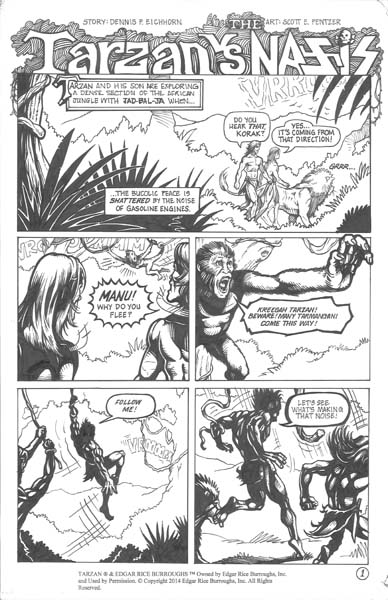
Tarzan and the Comics of Idaho cover, drawn by Adam Rosenlund.
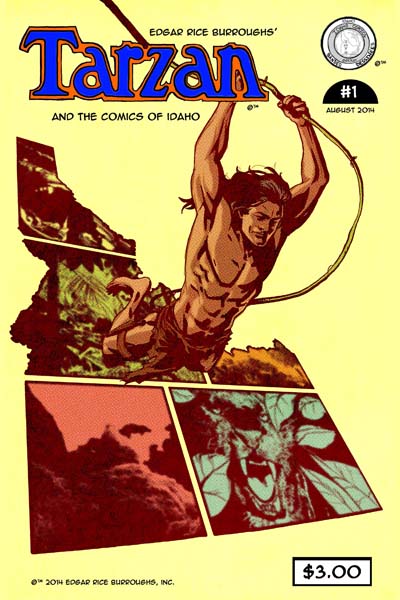
Cover of a comic book assembled by the author as a “warm-up” to Tarzan and the Comics of Idaho.
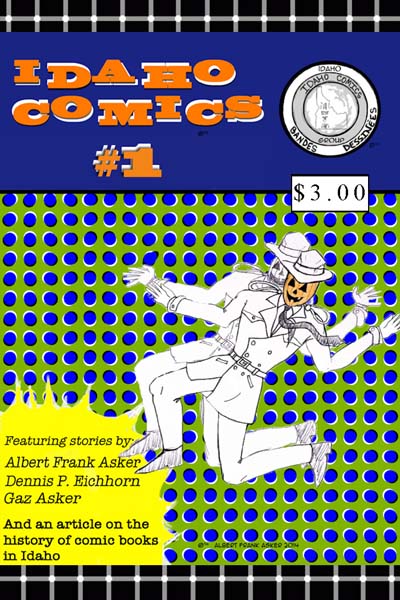
The author wrote this story about former Boise State football player Paul Reyna, illustrated by Steve Willhite of Payette.
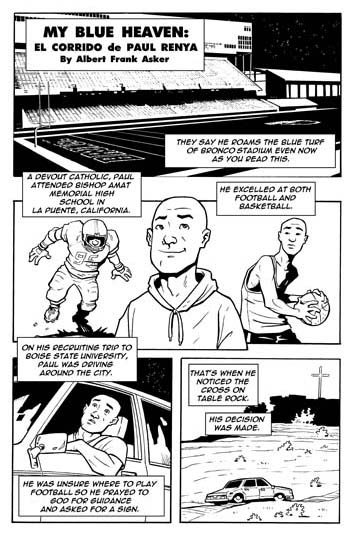
Nampa native Randall Kirby created a new Potentater adventure for Tarzan and the Comics of Idaho.
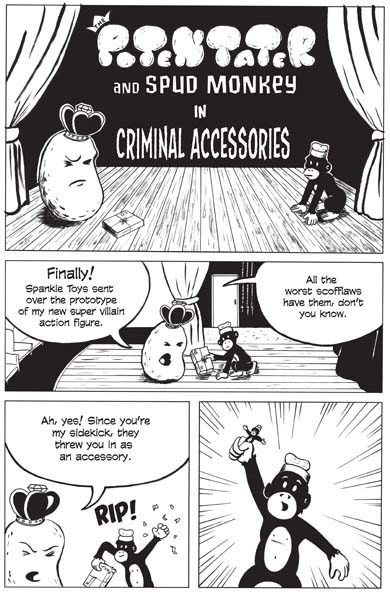
Back cover of the anthology.
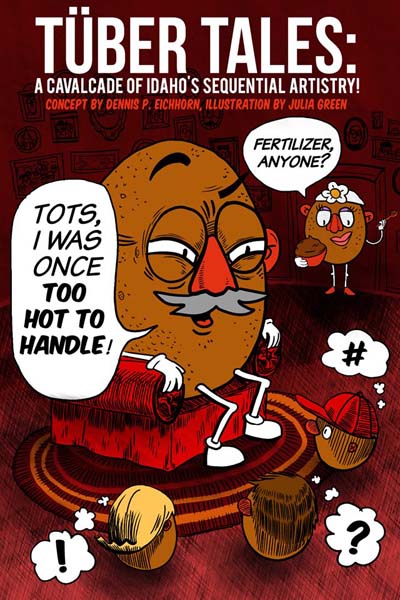
A comic written and illustrated by Jim Sumii of Garden City, in the anthology.
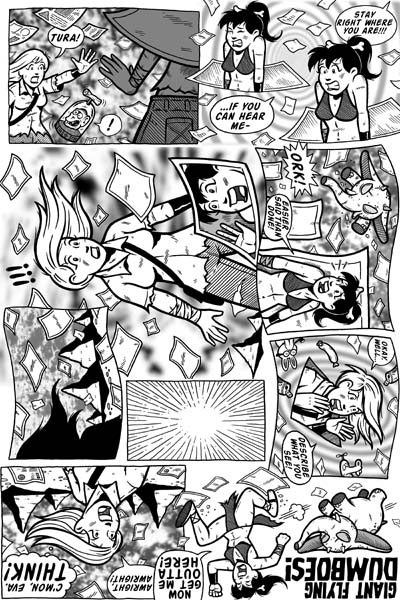
Edgar Rice Burroughs, Tarzan’s creator, lived in Idaho for a time, and had several adventures here that I believe greatly influenced his writing. What better character to headline our anthology? In addition to Tarzan’s appearance in novels, pulp magazines, movies, and TV shows over the decades, stories of his exploits have been published in comic book form since the 1940s.
I e-mailed the people at Edgar Rice Burroughs, Inc. and told them my idea. They said they loved the concept, but unfortunately Dark Horse Comics out of Portland was currently licensing the Tarzan character. However, because it was for charity (I planned to donate the proceeds of the comic book to the Boise Public Library) and because it would be a small print run of only five hundred copies, they said they would ask if Dark Horse would allow them to license Tarzan to us as well. Dark Horse was kind enough to agree.
Even though Dennis Eichhorn is mostly known for his autobiographical underground comix, he did have experience writing classic adventure heroes. He wrote a wonderful story in the award-winning Kitchen Sink Press anthology Will Eisner’s The Spirit: The New Adventures, so I asked if he would do us the honor of writing our Tarzan story. Dennis, a voracious reader, told me he was a big fan of Tarzan and had read all of Burroughs’ books on the ape man.
At the 2013 Library Comic Con, Dennis sat next to artist Scott Pentzer. He admired Scott’s art and thought it would be perfect for the Tarzan story. He was right. Scott was no stranger to illustrating action stories. He used to be the house artist for Boise’s first comic book publishing house, Bishop Press, started by brothers Kevin and Jason Hill, who also owned the 1,000,000 Comix shop in town. Bishop Press published the violent Rose & Gunn and Sade stories written by Kevin Hill and illustrated by Scott. After the publishing house folded, Kevin turned to the cloth, becoming pastor of a church in Oregon.
Next, I met with Allen Gladfelter at a coffee house downtown, but at first we couldn’t come to a conclusion about how he might contribute to the anthology. I had first discovered Gladfelter during a Free Comic Book Day celebration in town, where I noticed a display for a graphic novel that boasted the illustrator was from Boise. When I saw that the story was about a masked Mexican wrestler, or luchador, I couldn’t grab the book fast enough. The graphic novel, titled Strongman, was published by Slave Labor Graphics out of San Jose, the same outfit that used to publish Andy Garica’s Oblivion City series. It was illustrated by Gladfelter and written by an as-yet-undiscovered talent named Charles Soule. This gave me an insane idea to try, although I didn’t think I could pull it off.
I loved Soule’s graphic novel, and had followed his career very closely after that. On his blog, he promised a sequel to Strongman coming soon, and I kept my eyes peeled. The release date kept getting pushed back, but Soule kept getting more and more writing jobs, including an exclusive contract with Marvel to write what became the blockbuster mini-series of 2014, Death of Wolverine.
Gladfelter had showed me his custom-printed copy of Strongman Vol. 2 at the 2013 Library Comic Con, but wouldn’t sell it to me, as it was his only copy, sent to him by Soule. Later, Soule sold me a copy of the then-unpublished work, and I wondered if he would be willing to allow us to use a six-page “spinet” of this new story in our anthology. Incredibly, when I asked, he said yes. This was a huge get—not just because Charles Soule was the biggest writer currently working in comics, but also because it was illustrated by Gladfelter, who had recently hit the big-time himself. After starting out with comic strips and illustrations for Boise Weekly, he had scored a job as an illustrator for Disney’s/Pixar’s CARS comic books, based on their popular animated movies. He had also been involved in an anthology called Occupy Comics, which featured work by another very famous writer, Alan Moore (The Watchmen, The League of Extraordinary Gentlemen, From Hell).
I set out to recruit the talents of two nationally syndicated cartoonists who lived in Boise: Todd Clark and Steve Moore. Todd is an alumnus of Boise State University, chair of the Greater Northwest Chapter of the National Cartoonist Society, and the creator behind the nationally syndicated Lola comic strip. Moore is the writer and producer of the 2006 animated movie Open Season and the creator of the nationally syndicated In the Bleachers comic strip. Happily, they both agreed to contribute to our anthology, and both submitted unique items. Usually, Lola is a three panel comic strip that appears in daily newspapers and a bigger color strip for Sundays. For our anthology, Clark produced an original three-page story starring Lola. In the Bleachers is usually a one-panel strip à la The Far Side, but Moore turned in a full-page comic strip that was used as part of a Hollywood treatment for a potential In the Bleachers movie. Great stuff.
Next, I asked Idaho Falls native Dame Darcy for her help with our project. Dame Darcy wrote and drew Meat Cake for Seattle’s Fantagraphics for twenty years, and contributed to the Eisner and Harvey Award-winning anthology Comic Book Tattoo, a graphic novel made up of fifty-one stories inspired by or based on songs by Tori Amos, which was edited by Idahoan Rantz Hoseley. Dame Darcy also has created stories for Marvel Comics, illustrated a couple of Alan Moore’s “Cobweb” tales in Tomorrow Stories, and plays a mean banjo. In addition to being a comic book creator and musician, she is an award-winning director, makes hand-crafted dolls for museums, and is good friends with Courtney Love. She is such an interesting character that I could write a whole article just on this enchantress of Idaho Falls.
I recruited Steve Willhite of Payette to draw a story that I wrote for our anthology about former Boise State University football player Paul Reyna, who died fifteen years ago from a freak accident on the Blue Turf. This is another example of a story that I simply had to get out of my system. Steve has illustrated stories for FUBAR (about zombies attacking during the second World War), The Mighty Bomb, and Jesus Hates Zombies. One of his claims to fame is that in 2012, he worked on FUBAR: Pacific Theatre of the Damned, which reached number six on the New York Times Bestsellers List for graphic novels and won the IGN People’s Choice Award.
Randall Kirby’s work has always cracked me up. Kirby is a cartoonist born in Nampa who does wonderfully funny superhero stories and LGBT-themed comics. His humorous take on superheroes in BOP! Comics is not to be missed, and was of particular interest to me because of the heroes’ connection to Idaho. His stories feature a costumed adventurer from the fictional Idaho town of Coffin Nail named Captain Zombie, his intrepid sidekick Emaciated Corpse Boy, and Idaho’s very own super-villian, The Potentater. I was really excited when Kirby agreed to do a brand-new Potentater story for our Tarzan comic book.
I asked Adam Rosenlund, a very talented artist who is part of Floodworks Studios, to draw the cover for our antholgy, and he knocked it out of the park. Jon Keithley and Shanae LaVelle of Mystery House Comics also contributed a story. Other help with the anthology came from Garden City cartoonist Jim Sumii, from a rising sixteen-year-old artist/cartoonist named Gaz Asker (my daughter), who helped a great deal with digital art editing for our book, and from local artist and Boise State graduate Julia Green. Obviously, the Gem State has a lot of great sequential art talent. And there are plenty more writers and artists whom I hope to include in next year’s anthology.
Our publishing imprint, Idaho Comics Group, debuted Tarzan and the Comics of Idaho at the 2014 Library Comic Con. As part of our contract with Edgar Rice Burroughs, Inc., we sent eight copies of our anthology for their archives in Tarzana, Calif. They were very happy with the product, and said they are excited to work with us on Tarzan and the Comics of Idaho #2 next year. In addition to the copies that we’ve sold in the Treasure Valley, we have also received many orders via the Internet and have shipped copies to California, Oregon, Texas, Ohio, Georgia, Florida, Virginia, Australia, and the United Kingdom. I’m currently searching for Paul Reyna’s mother or family, to send them copies, and to show that we remember Paul.
By the way, I improved and expanded that article I wrote for myself, which no one had ever read, and it was published earlier this year by Boise State University’s The Blue Review.
Walt Disney was a cartoonist with Idaho ties. His wife of forty-one years, Lillian, was born in Spaulding and grew up on the Nez Perce Indian Reservation in Lapwai. The two were married in Lewiston in 1925. Lillian Disney (née Bounds) was the person who came up with the name for Mickey Mouse. I bring all this up because after my experience, I’m reminded of a quote by Walt: “All our dreams can come true, if we have the courage to pursue them.”
They sure can, Walt. They sure can.
Tarzan and the Comics of Idaho is available in Boise from The Record Exchange, Captain Comics, The Paperback Place, and at Tree City Books in Boise’s Main Library.
This content is available for purchase. Please select from available options.
Purchase Only
Purchase Only

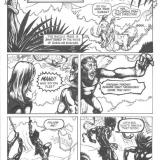
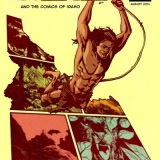
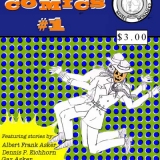
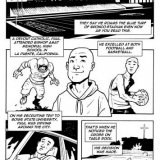
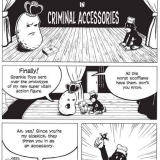
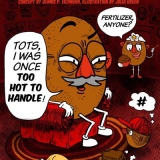
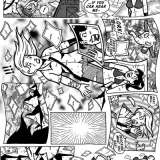
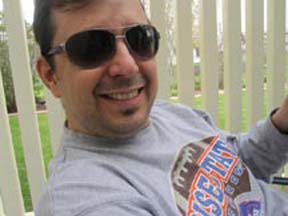
One Response to Tarzan Loves Idaho
Pingback: Comics A.M. | At long last, 'Blake and Mortimer' gets a prequel - anassbourasse